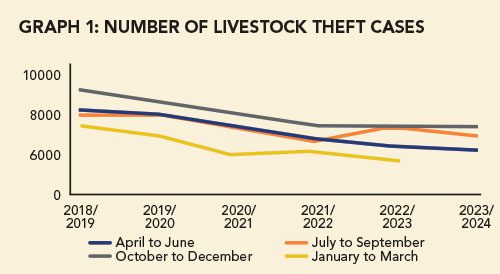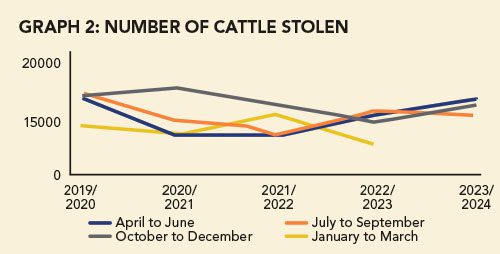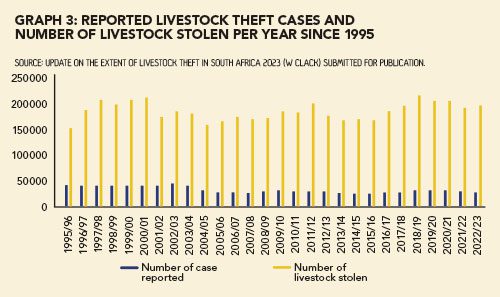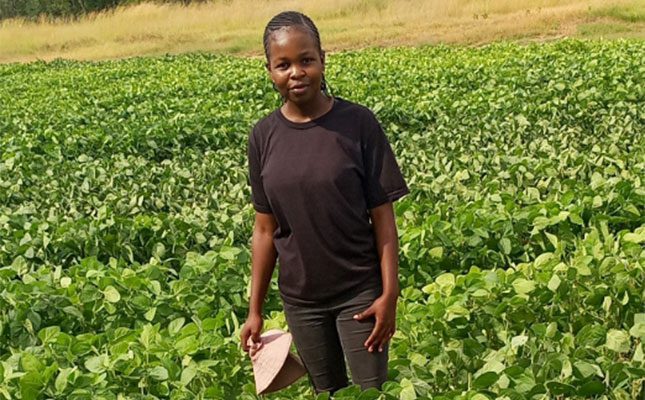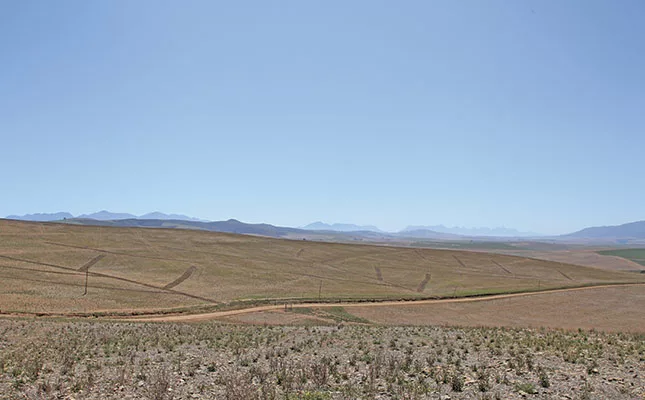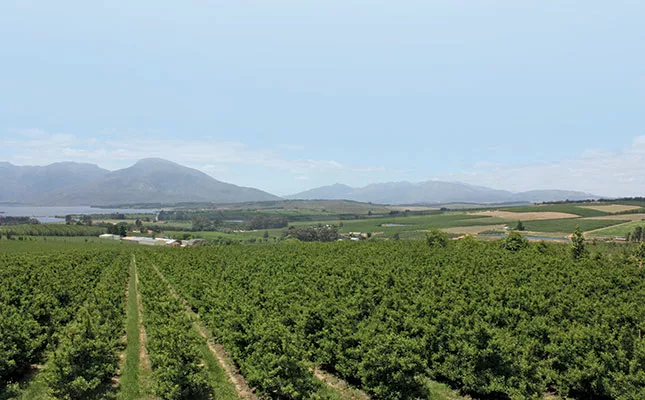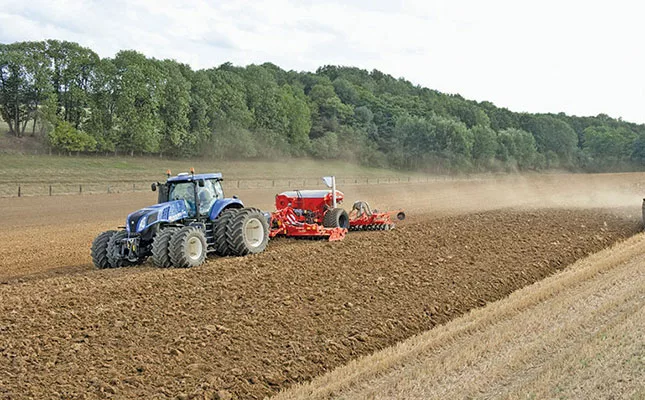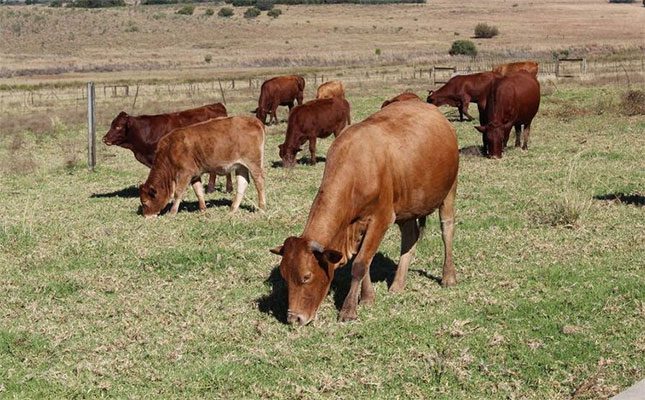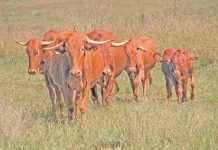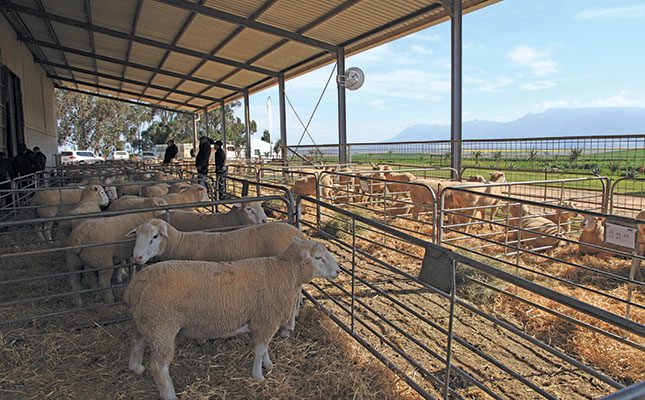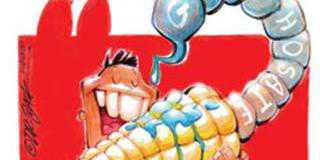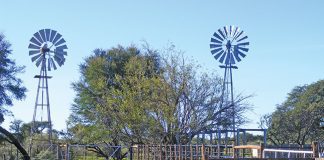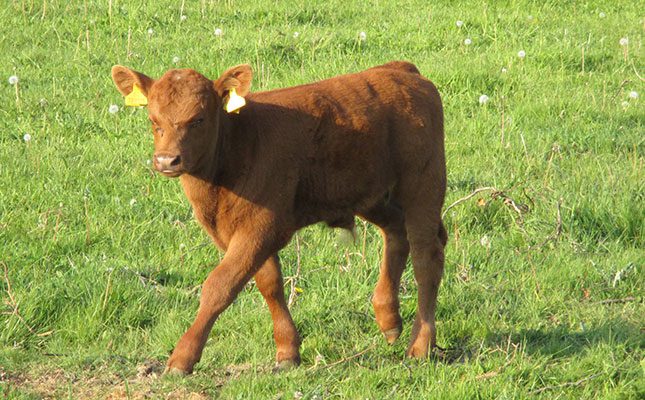
Photo: Wikimedia Commons
When delving into the livestock theft statistics provided by the South African Police Service (SAPS) on 16 February 2024, a superficial glance might suggest a modest decrease of 2.1% (156 less) in the overall number of cases, as is found in Graph 1 below.
However, it’s crucial not to fall into the trap of complacency.
Merely scratching the surface of these figures offers only a partial understanding of the complex reality on the ground, leaving significant gaps in our comprehension of the issue.
While a decrease of 2,1% in livestock theft cases may seem encouraging, it’s essential to contextualise this within the broader scope of livestock management and agricultural practices.
Livestock theft remains a persistent and pervasive problem, inflicting substantial economic and emotional damage on farmers and rural communities across South Africa.
The toll extends beyond mere numbers; it encompasses livelihoods, food security, and the social fabric of rural societies.
READ Study reveals the motives behind stock theft
Moreover, the reported decrease in livestock theft cases might not accurately reflect the true extent of the problem.
Underreporting due to various factors, including distrust in law enforcement, fear of reprisal from criminal networks, and bureaucratic hurdles in reporting procedures, is a well-documented phenomenon.
Thus, the official figures likely represent only a fraction of the actual instances of livestock theft, skewing the perception of the problem’s severity.
In the analysis of livestock theft, it will be neglectful not to scrutinise the number of animals stolen as it may paint a different picture.
Cattle theft
Graph 2 of the livestock theft statistics paints a nuanced picture that demands closer scrutiny.
While there’s a general downward trend in the overall number of livestock theft cases, a deeper investigation reveals a troubling reality: the sharp increase in cattle stolen, particularly in the current year and quarter.
The data showcases a startling 11% surge in cattle theft, soaring from 14 510 to 16 124 head of cattle in the quarter from October to December.
This alarming spike not only signifies a significant escalation in the frequency of cattle theft but also translates into substantial monetary losses for farmers.
Economic perspective
To put it into perspective, in terms of economic value, this surge equates to an increase from approximately R217,7 million to a staggering R 241,8 million within the same quarter.
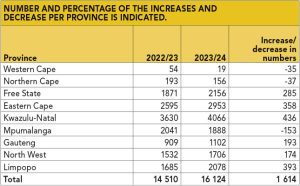 This means that, for only cattle producers, the loss is R24 million more than the previous quarter.
This means that, for only cattle producers, the loss is R24 million more than the previous quarter.
The table shows the extent of the increases and decrease per province is indicated.
From the table, it is deduced that the number of cattle stolen in the Western and Northern Cape is minimal compared to the numbers in the other provinces.
However, concerning the numbers stolen in these two provinces, it remains significant.
What is alarming from the statistics is in all other provinces, except for Mpumalanga, there is an excessive increase in the number of cattle stolen.
Furthermore, what is even more alarming is that the number of cattle that producers are losing in 2024 are more than in 1997 to 2000, when the numbers were regarded as unacceptably high.
(See Graph 3. Note: the figure does not include the quarterly statistics for 2023/24).
In the next two weeks, Clack will analyse stock theft in the provinces. If you wish to receive an analysis of a specific area, municipality, or police station, send him a written request via email at [email protected].
This research is aimed to explore livestock theft as a severe phenomenon in South Africa, and intends to provide an impartial and objective analysis devoid of external influence, conflicts of interest, or vested interests.
This report was entirely self-funded, and no external financial support, sponsorship, or grants were involved.

